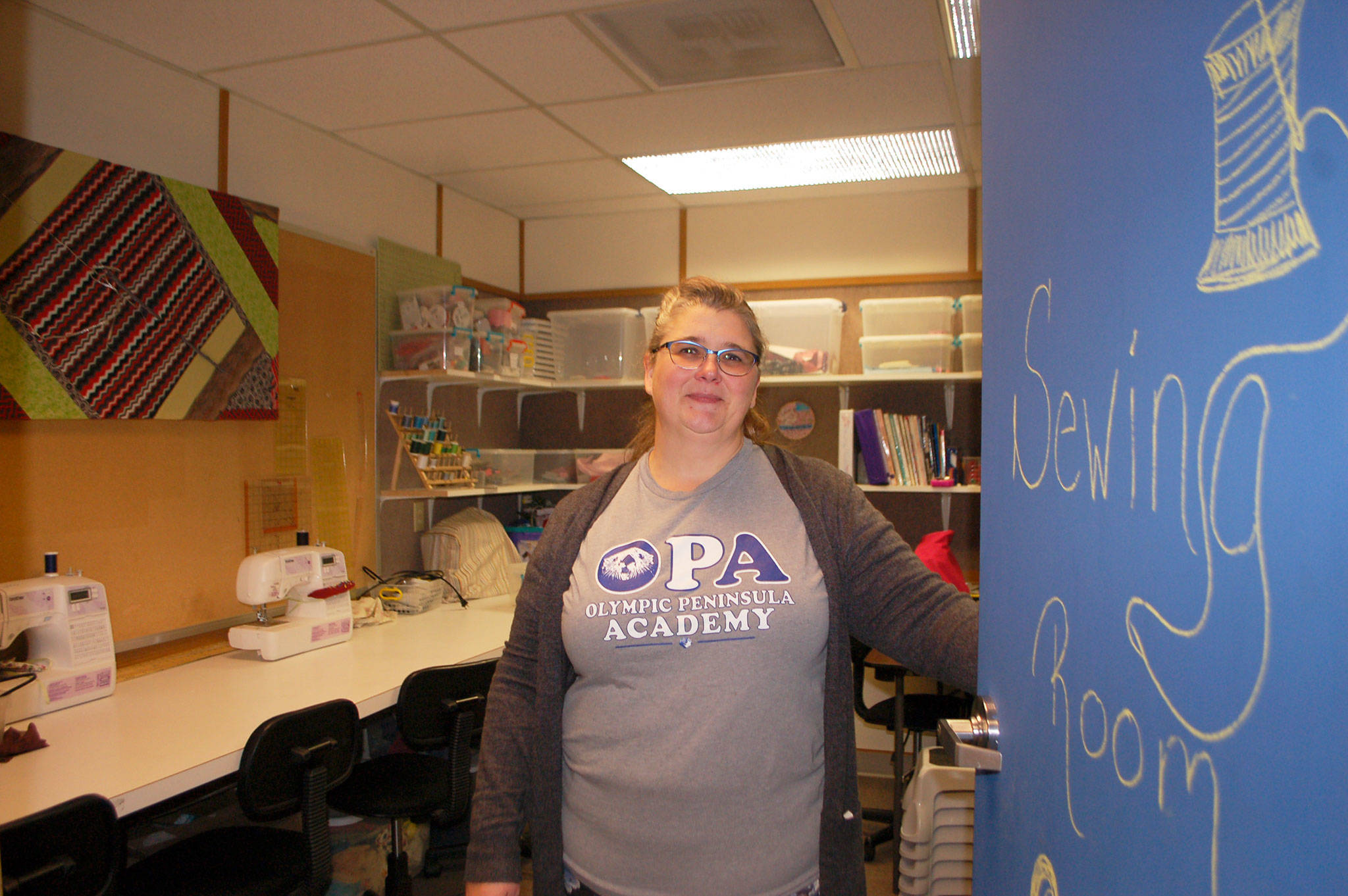Olympic Peninsula Academy staff and students have made the most of their new home within six portables along West Fir Street, West Alder Street and North Second Avenue.
The alternative education program of about 100 students was displaced at the end of the 2017-18 school year and into the beginning of this school year, as Sequim School District’s central kitchen is rebuilt in the northwest corner of the Sequim Community School and the 1949 portions of the school are demolished.
Olympic Peninsula Academy (OPA) held class at the Sequim Boys & Girls Club for about six weeks into the school year until Oct. 10, when the program’s new portables were ready for staff and students.
The district purchased the portables from Central Kitsap School District in July — one single portable and five double portables — and converted them into 10 classrooms and one office space.
The portables serve as a temporary housing unit until the district finds a more permanent space for the program.
“We’re thankful to have a space that’s ours,” OPA enrichment teacher Lilli Hardesty said.
OPA operated out of part of the Sequim Community School on West Fir Street before it was relocated during deconstruction.
The district made several improvements to the portables — adding ADA-compliant ramps, connecting the units and putting in electricity — while establishing parking and pull-in and drop off areas.
“We came through with what (the district) was going to do,” said Sequim schools superintendent, Gary Neal.
The City of Sequim approved occupancy permits for the portables, but the district still needs to put in a fire suppression system and a fiber optics capability so the program can have a working internet connection.
“We have to get the fire system hard-wired because when we did the deconstruction of the Community School and OPA (building) that line they had for the fire system was disconnected,” Neal said.
Because the buildings lack the fire suppression system, OPA staff say a parent checks each classroom every 15 minutes to make sure there are no fires in any classrooms — as required by the fire marshal — until a fire suppression system is added.
Neal said there are cell phones and WiFi hot spots in every classroom for teachers to use until the district is able to get a wireless internet connection established.
A temporary pull-in and drop off area for parents and students was created along North Second Avenue near OPA’s office and parking blocks were placed along West Alder Street.
Classroom space
Hardesty said her new classroom has a similar setup as her previous one. She teaches a variety of subjects from STEM (science, technology, engineering and mathematics) topics to sewing, and said she is happy to have a space teachers can call their own.
While teaching at the Boys & Girls Club, Hardesty said she stored many of her teaching supplies in her car.
“We’re thankful to have a space that’s ours,” Hardesty said.
Julie Carrizosa, an OPA parent and president of the OPA Parent-Teacher Organization (PTO), echoed Hardesty’s sentiments.
“It’s the most space we’ve ever had, so that’s exciting,” Carrizosa said. “I know the teachers are slowly working on getting the rooms personalized.”
One of the notable classroom transformations in the portables is high school teacher Kim Glasser’s room which embodies a cozy and warm learning environment.
“Kim’s room is the haven for everybody to hang out and work on schoolwork,” Carrizosa said. “I don’t know any other schools that have that kind of space.”
Challenges
Among challenges OPA staff face with the switch to the portables include not having a working internet connection.
“Our teachers need internet,” Carrizosa said. “One of our teachers has been taking students to the high school’s computer lab. In today’s world, you have to have internet to teach.”
Several OPA parents and PTO members have expressed concerns for where students would play at recess and use the bathrooms before the program moved into the portables.
OPA staff said recess is held at Sequim High School’s baseball field and the gymnasium near the high school’s band and choir room. Students also use the bathrooms in the same facility as the high school’s band and choir room.
Olympic Peninsula Academy was once attached to the old central kitchen at the Sequim Community School, but now the program lacks hot food options.
“Since the Boys & Girls Club, we’ve had to re-think our menu,” Hardesty said.
OPA students can get both breakfast and lunch while at school. There are two microwaves available for students to heat up food from home, but staff said a line usually forms to use them.
Sodexo, the district’s food provider, is working with district staff to figure out what food options can be offered for OPA students, staff said.
Carrizosa said OPA staff and PTO members were planning to discuss safety options with the OPA principal Mark Willis at its next PTO board meeting on Tuesday, Nov. 6.
In the next several months, OPA parents will be working on beautifying the exterior area surrounding the portables to make it more “homey” for students and OPA staff, they said.



